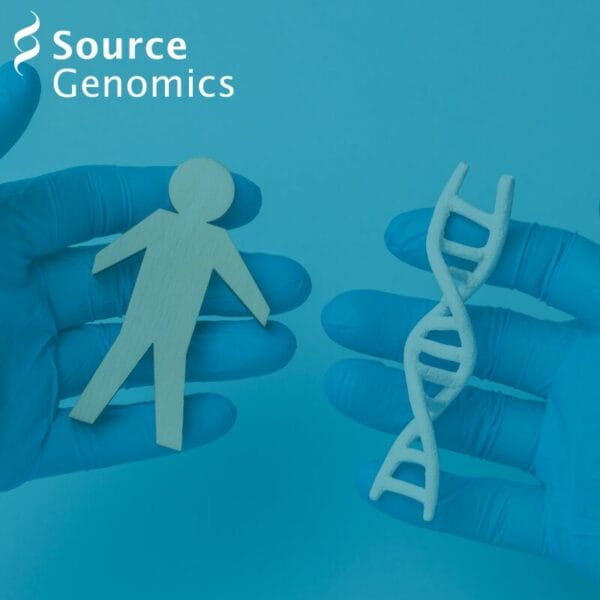Understanding Olink Proteomics
Olink proteomics, a pioneering approach in the field of biomarker discovery, stands at the forefront of modern proteomic analysis. Based on the innovative Proximity Extension Assay (PEA) technology, this method revolutionises biomarker research by enabling high-throughput and scalable analysis of thousands of proteins simultaneously.
The field of proteomics allows researchers to uncover protein-protein interactions, post-translational modifications, and expression pattern. These insights enhance our understanding of cellular functions and disease mechanisms, paving the way for new therapeutic strategies.
In recent years, proteomics has gained significant traction in the life science research landscape, contributing uniquely to drug development, disease mechanisms, and personalised medicine. Olink Proteomics is at the forefront of proteomic discovery, providing a platform for protein analysis from early discovery stage through to clinical qualification.
Proximity Extension Assay Technology
Central to the Olink proteomics method is the PEA technology. PEA represents a novel technique that allows for the simultaneous measurement of a multitude of proteins. This is achieved through a unique combination of antibody-paired probes and DNA amplification.
Unlike traditional protein quantification methods like ELISA or mass spectronomy, PEA technology allows for highly sensitive, specific and multiplexed protein detection.
- High Sensitivity and Specificity: PEA uses antibody pairs that bind to target proteins, creating a DNA sequence when in close proximity, which is then amplified and quantified. This dual recognition process ensures high specificity and reduces background noise, enhancing sensitivity.
- Multiplexing Capability: PEA allows the simultaneous measurement of multiple proteins in a single sample. This multiplexing capability is crucial for comprehensive proteomic analyses, enabling researchers to study complex protein interactions and disease mechanisms efficiently.
- Quantifiable DNA Signal: PEA converts protein binding events into a DNA signal that is amplified and detected using NGS or real-time PCR, combining precise DNA quantification with protein detection for a scalable, robust proteomics method.
High-Throughput and Scalability
One of the key advantages of Olink PEA technology is its exceptional scalability. By integrating PEA technology with NGS, Olink enables the analysis of thousands of proteins simultaneously. This high-throughput capability is crucial for extensive biomarker discovery, allowing researchers to conduct comprehensive proteomic profiling in a single assay.
Researchers seek scalability for many reasons. As our understanding of the field deepens, researchers hypothesis naturally become more complex. With this comes an unavoidable need for larger data sets and ongoing study expansion requirements. As well as this, the need to integrate proteomics data with other genomic data is becoming increasingly apparent, giving us a deeper look at the wider biological pathway.
Application in Disease Research
The Olink Explore panels are methodically categorised into four critical disease areas:
- Cardiometabolic
- Inflammation
- Neurology
- Oncology
This categorisation greatly enhances the potential for biomarker discovery across various health and disease states. Olink’s technology has been demonstrated in studies focusing on a range of conditions, from Behcet’s disease to bronchopulmonary dysplasia, giant cell arteritis, sepsis, and atherosclerosis [1][2][3][4]. Its application in identifying immune-related biomarkers, inflammatory proteins, and cardiovascular event predictors showcases its wide-ranging impact in medical research.
Olink’s technology significantly enhances the potential for biomarker discovery across a wide spectrum of health and disease states. The innovative approach has been showcased in studies covering diverse conditions, including Behcet’s disease, bronchopulmonary dysplasia, giant cell arteritis, sepsis and atherosclerosis [1][2][3][4]. Its application in identifying immune-related biomarkers, inflammatory proteins, and cardiovascular event predictors showcases its wide-ranging impact in medical research.
Analytical Approach
The analytical strategies employed in Olink proteomics encompass both hypothesis-driven and hypothesis-generating approaches. Using specific antibody panels for protein measurements can enable targeted investigations based on pre-existing hypotheses. Concurrently, the vast data allows for exploratory analysis, leading to the generation of new hypotheses and discovery of novel biomarkers.
Additionally, the integration of machine learning algorithms in data analysis has further enhanced the method’s capability to identify protein-based phenogroups, offering new insights into complex biological interactions.
Source Genomics: First UK Service Provider of Olink
Olink technology represents a significant leap forward in the field of biomarker research. Source Genomics is your trusted laboratory service provider for rapid and high-quality proteomics.
Benefit from:
- Highly qualified scientific experts handling your samples
- Market-leading turnaround times on data
- UK-based sample processing
- Wider multi-omic service offering for downstream analysis
References
- Liu H, Zhang P, Li F, et al. Identification of the immune-related biomarkers in Behcet’s disease by plasma proteomic analysis. Arthritis Res Ther. 2023;25(1):92. Published 2023 Jun 1. doi:10.1186/s13075-023-03074-y
- Kindt ASD, Förster KM, Cochius-den Otter SCM, et al. Validation of disease-specific biomarkers for the early detection of bronchopulmonary dysplasia. Pediatr Res. 2023;93(3):625-632. doi:10.1038/s41390-022-02093-w
- Wadström K, Jacobsson LTH, Mohammad AJ, et al. Analyses of plasma inflammatory proteins reveal biomarkers predictive of subsequent development of giant cell arteritis: a prospective study. Rheumatology (Oxford). 2023;62(6):2304-2311. doi:10.1093/rheumatology/keac581
- Agyekum A, Cosgriff C, Dunn T, Giannini H, Ittner C, Jones T, Liesenfield O, Meyer N, Miano T, Reilly J, Ronner L, Shashaty M, Sun L, Sweeney T, Turner L, et al. 1192: COVID SEPSIS GENE EXPRESSION SUBPHENOTYPES MANIFEST DIFFERENTIAL PLASMA PROTEIN SIGNATURES. Critical Medical Care. 2022;51(1):594. doi:10.1097/01.ccm.0000910504.10795.d9
Contact us today and one of our skilled account managers will be in touch with a free consultation including further information and pricing details.
Share this article

